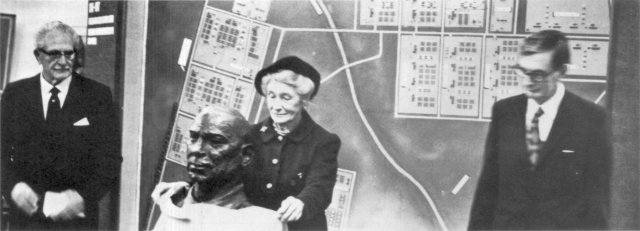

 The South African
The South African
South Africa is proud of its treatment of prisoners-of-war
in World War II. The Museum has decided that
it is time the rest of the world is made aware of this
achievement in the field of human relations, which will
stand to South Africa’s credit for all time, and has built a
Prisoners-of-War section depicting some of the aspects
of a prisoner’s life.
The display was opened by Major-General J.C.
Lemmer, MC, Chairman of the Museum’s Board of
Trustees, who was ‘put into the bag’ at Tobruk and
therefore spoke with conviction when he said, "... The
words, ‘For you the War is over’ or ‘Für dich der Krieg
ist vorbei', or their equivalent in any language, spoken
by a victor are probably the most demoralising that any
soldier worthy of the name could hear", and again,
"Those who have not endured the torment of incarceration
can never know, or visualize, to what depths of
despair a prisoner can sink, nor the heights to which his
morale can rise at the slightest prospect of escape."
The man largely responsible for the treatment and
care of prisoners in South Africa was the late Colonel
H.F. Prinsloo, a bronze bust of whom was unveiled by
his widow to form part of the exhibition the opening of
which was attended by over a hundred guests among
whom were many ex-prisoners of war including Italians
who were incarcerated in South Africa. The bust was in
fact sculptured by the well known ltalian sculptor
Eduardo Villa whilst incarcerated at Zonderwater and
who has since settled in Johannesburg.

Another fine exhibit is a model of Zonderwater Camp made by Italian prisoners. This camp was opened at Zonderwater in February 1941 and by the end of 1942 held 63 000 prisoners. It was a big camp consisting of 14 Blocks, each of four camps. There were 24 miles of roads within the prohibited area.
The exhibition at the Museum is to be permanent but due to lack of space is restricted to a few of the important aspects of the daily life of a POW. There is also an excellent diorama of a bungalow and a working model of an attempted escape via a tunnel dug beneath the bungalow stove.
In his address General Lemmer mentioned skills developed by POWs which they would previously have considered unattainable. There are some fine examples on show. POWs have always aspired to and reached great heights in the field of art and here, too, the Museum has been most fortunate in acquiring some excellent work some of which has never before been exhibited publicly.
The display is well worth seeing and should draw many viewers thereby adding to the already large number, in the region of 190 000, that visit the Museum each year.
Return to Journal Index OR Society's Home page
South African Military History Society / scribe@samilitaryhistory.org